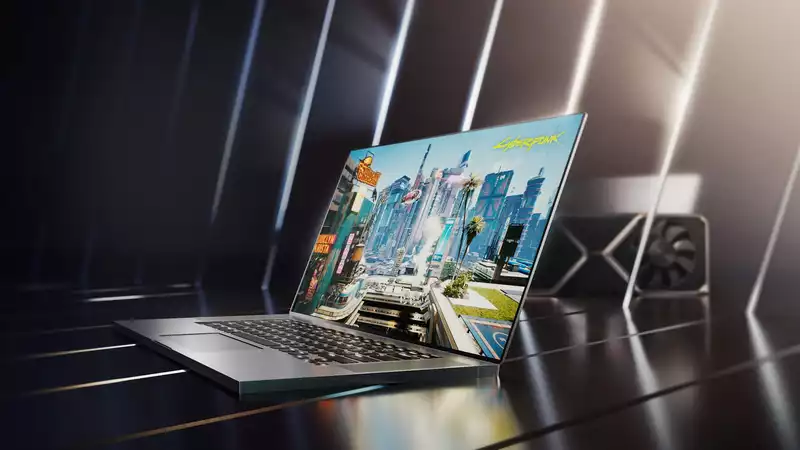For Nvidia's new GeForce RTX 30 series of mobile GPUs for gaming laptops (including RTX 3060, RTX 3070, and RTX 3080), note the brand name. Also note the detailed specifications, including clock speeds and TDP ratings. Here's what ComputerBase got from the list of mobile RTX 30 series GPUs.
There are 28 variants in all, with dramatic differences in specs, including TDP and clock speeds, among the three tiers of GPUs, the various vanilla and Max-Q branded models.
What are the overall results? The fastest versions of the entry-level RTX 3060 mobile GPUs are comparable in raw graphics processing to the bottom end of the RTX 3080 Max-Q tier.
Calculating as an example, the highest clocked RTX 3060 is 9.3TFLOPS while the slowest 3080 is 9.6TFLOPS. When comparing throughput at boost clocks, the difference is a bit larger. Factors such as dynamic boost, which can add even more performance headroom, further complicate matters.
However, one can also say this. The fastest RTX 3080 and the slowest RTX 3060 compare to 16.6 TFLOPS and 6.3 TFLOPS. In other words, depending on which RTX 3060 and 3080 you choose, the difference could be very close. Or it could be 2.5 times the raw performance.
In any case, the overall implication is that we cannot assume that premium brand chips will be dramatically faster, even across all three tiers of GPUs; if we look a little closer, not just at GPUs, we'll find more surprising numbers.
In the RTX 3060 range, the lowest clocked RTX 3060 runs at 817 MHz base and 1,282 MHz boost, with a TDP of 60 watts. The fastest RTX 3060? It is a 115-watt GPU with a base clock of 1,387 MHz and a boost clock of 1,792 MHz. This almost doubles the TDP and jumps the base clock by 1.7x.
The same story holds true for the RTX 3070 and RTX 3080 series options. Let's look at the slowest RTX 3080 Max-Q chip. While the fastest vanilla mobile RTX 3080 has a base clock of 1,350 MHz and a TDP of 150 watts, this one has a base clock of 780 MHz and a TDP of 80 watts. Again, the TDP is almost twice as high and the base clock is just over 1.7 times higher.
Of course, since Nvidia introduced the Max-Q GPUs targeted at thin and light gaming laptops, the range of clock speeds and performance available in certain mobiles has become much wider. For example, starting with the current RTX 20 series generation, we regularly see RTX 2070 laptops with performance comparable to RTX 2080 Max-Q models.
With the new RTX 30 series, however, the lines between the tiers appear to be even more blurred. Further complicating matters, there is no longer a direct connection between desktop and mobile. In other words, RTX 3080 mobile is not based on the same silicon as RTX 3080 desktop.
Overall, with the new RTX 30 series, it is more important than ever to pay close attention to specifications such as clock speeds and TDPs to get a clear picture of the performance that can be expected. For example, operating under the simple assumption that the RTX 3070 will always be much faster than the RTX 3060 may lead to disappointment.


Comments